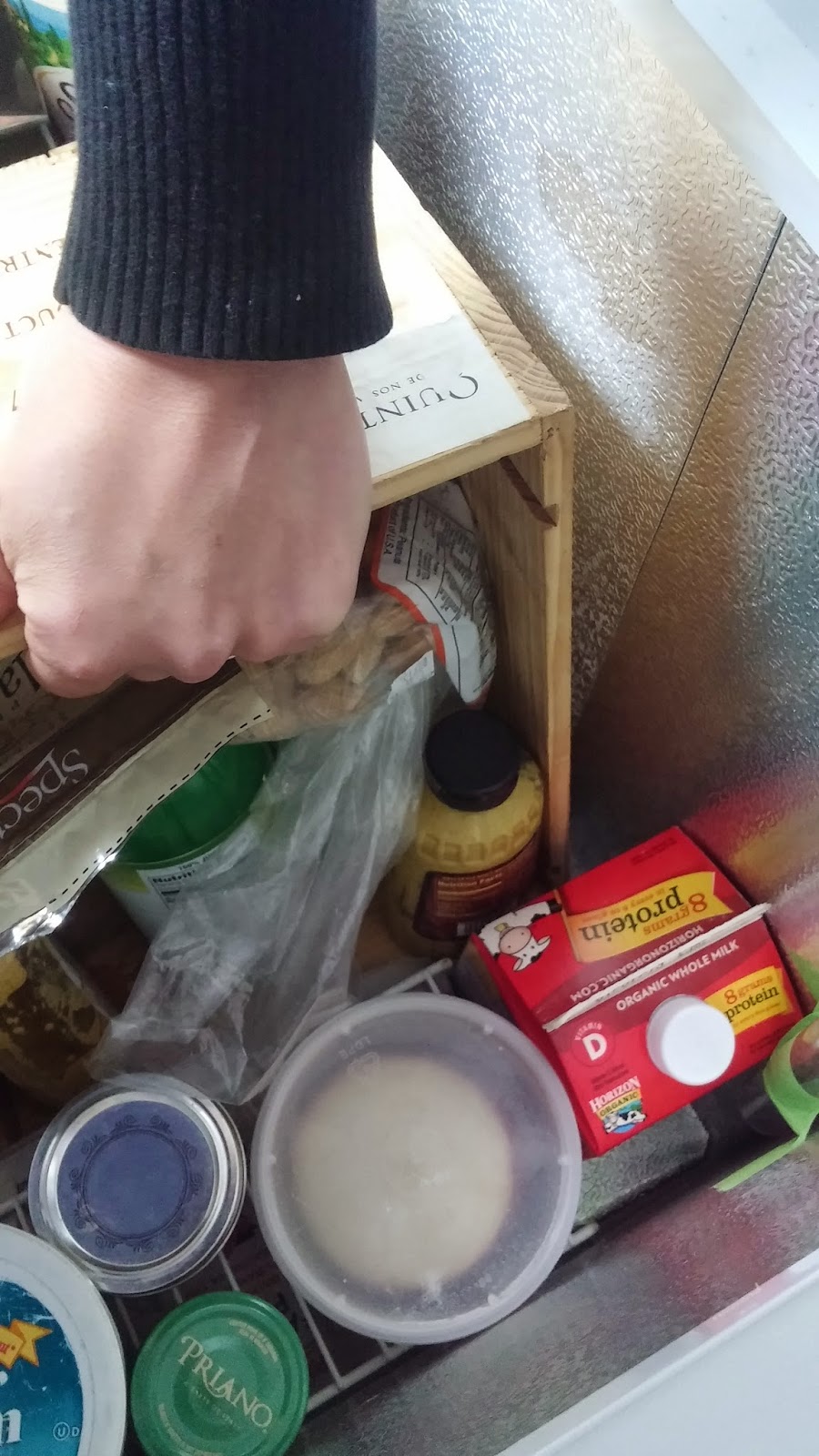We then compared our range of total daily energy consumption from the table to our actual daily energy consumption from our electric company. The numbers matched up pretty well, although our actual allocation of energy use to specific appliances is just a ball park estimate.
Of course, we could have used an actual energy monitor that plugs into each individual outlet or our circuit breaker, but we don't have one and its probably for the best given our tendency to overanalyze...
 |
| High scenario: The 'computer' category assumes that we leave our desktop with an old monitor plus two laptops on for 24 hours (and the monitors don't go to sleep). The heat lamps and light in our well house are only on when its cold, but when it is, they're on all night. We're assuming that its cold AND wet, since the sump pump in this scenario is also working pretty hard. "Plants" refers to the fluorescent grow lights we use for seedlings. Our oven is gas powered, but has some auxiliary electric. We don't have cable or TV (see computers), which would be big energy consumers if we did. |
What stands out in all of our energy use scenarios is that our ancient water heater and refrigerator account for over half of our electric bill.
The water heater is going to have to wait for a little bit, as its a slightly larger purchase that will involve some professional plumbing and electric help and the payoff for switching it out isn't as immediate.
However, any excuse to get rid of the old, loud, big, in the way, difficult to close refrigerator! We did some research and what we found was disappointing. The most efficient Energy Star non-dorm sized refrigerators (over 7cu ft) start at 249 kWh/yr, with most using over 300 kWh/yr. That isn't so much, but in comparison, similarly sized chest freezers start at 189 kWh/yr to keep food substantially colder.
Most of the difference has to do with the basic layout. When you open a chest freezer, most of the cold air stays down at the bottom, whereas when you open a standard refrigerator door, all of the cold air comes pouring out towards you. The chest freezer is also better insulated and you never have to worry about the door popping open (unless you over pack it).
Chest freezers are also substantially cheaper, as they are basically just a box. No shelves. No drink dispenser. No ice maker. Just box.
So we did some thinking. Our kitchen is small and limited in counter space. Pretty much any upright refrigerator would partially block our lovely wall cabinet. How attached were we to conventional shelves? We pretty much only use the front 6" inches...the backs of the shelves being a graveyard for unlabeled jars and old mustard. Did we want a drink dispenser? no. Did we want an ice maker? no. Did we even want a freezer compartment?
An investigation of our freezer revealed 10 ice packs, a single Tupperware of frozen berries, and 6 zip lock bags of malted barley from the last time we made beer. But what if someday we want to buy ice cream? What if someday we actually have leftovers that stick around for more than two days?
We ultimately decided on buying two chest freezers and a temperature controller (still cheaper than one refrigerator). The larger chest freezer came with an energy rating of 248 kWh/yr. Not particularly good for a freezer, but still better than the best refrigerator, and for our purposes it doesn't really matter. We hooked it up to the temperature controller, and voila...a 7.2 cu ft, better than 248 kWh/yr, refrigerator.
We stripped our old refrigerator of its shelves and made a sort of sliding box system inside of the chest freezer...ahem...refrigerator.
Somehow I never took a good picture of our old refrigerator before we moved it, so this is the most comparable before-after I can come up with:
Before After
You can see the discoloration on the floor where the old refrigerator used to be. The new chest refrigerator takes up about the same floor area as the old refrigerator, just in a slightly different orientation.
In the back corner we have the temperature sensor part of the temperature controller hanging inside of a plastic tube we happened to have (for protection) and not so neatly taped in place with painter's tape. The actual temperature regulator sits in the corner behind the refrigerator.
 On the top layer we have a basket that slides from side to side. We're looking for a few more baskets with compartments to organize and store things we use often more securely. The current basket is a bit of a mess.
On the top layer we have a basket that slides from side to side. We're looking for a few more baskets with compartments to organize and store things we use often more securely. The current basket is a bit of a mess.
On the second layer, we have a drawer from our old refrigerator (with glass shelf on top for a cover). The glass cover slides over to give access to the contents of the drawer. The entire drawer also slides out of the way to give access to a third layer (milk crate covered with freezer shelf).

For now we also have another crate on the bottom layer that can be lifted up to rest on the built in ledge
Kind of a clunky first pass at organization with materials we have lying around. Once we have an idea of what works well for us we'll think about building something more permanent. This is probably as full as our refrigerator will ever get, since we had an amazing, large CSA basket gifted to us today by the same incredible person that helped us track down a plumber.
As for the freezer, we ordered a smaller Energy Star chest freezer that we'll keep somewhere out of the way and only use as we need it (or get a second temperature controller so it can double as an overflow fridge). We ate the berries we had frozen and are feeding the defrosted malted barley to the chickens (who LOVE it).
Some of the other old refrigerator shelves have temporarily been installed in our utility/laundry room to hold our garden seedlings. No shelf in our house is safe from plants!
Keep reading:

















